Mini Highland Cattle Farming is a venture blending charm and profitability. Discover the benefits of these compact breeds, emphasizing efficient breeding, sound nutrition, and genetic considerations. Optimize shelter designs for their unique needs and implement health management strategies. Sustainability takes center stage with climate adaptation, fostering resilient herds. Navigate calf care, fencing, and legal compliance for a well-rounded approach. Unlock the potential for profitability by marketing through community networks.
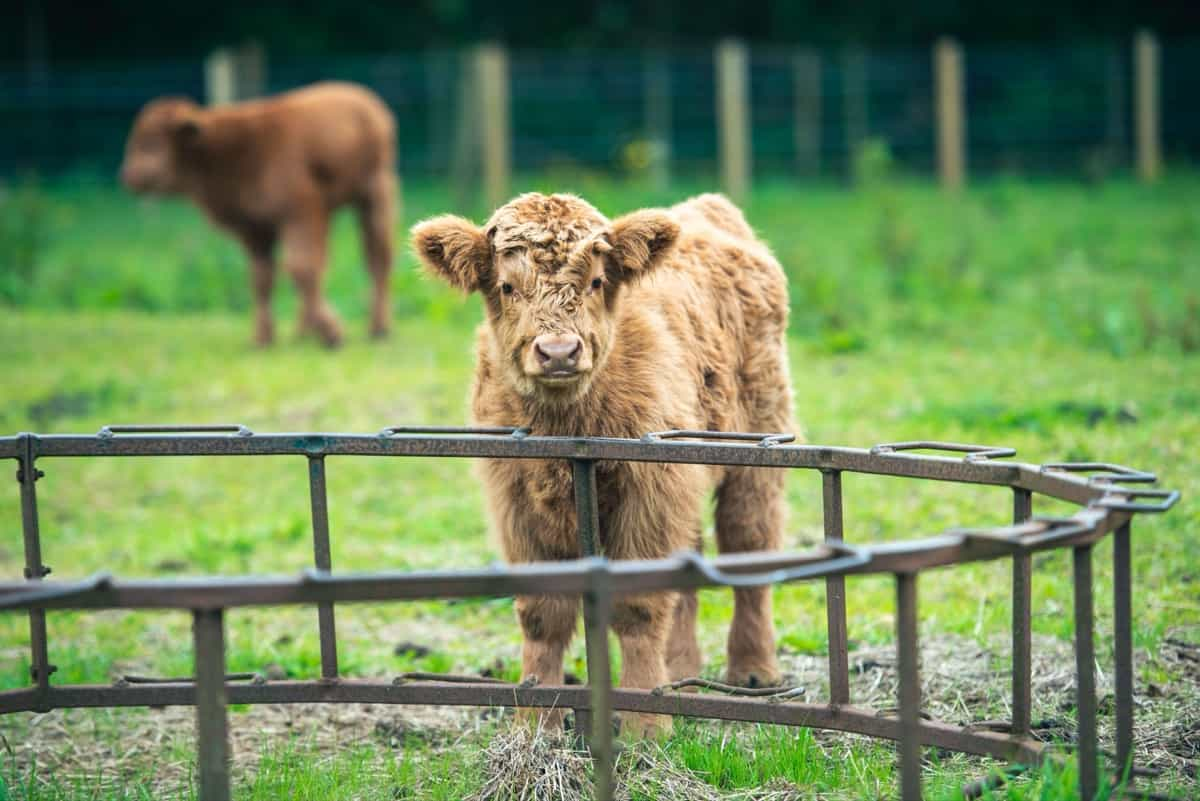
Introduction to Mini Highland Cattle Farming
Mini Highland Cattle are a breed of small, furry cows that originated in the Highlands of Scotland. They are known for their hardiness, adaptability, and friendly personalities. They make great pets, lawnmowers, show animals, and sources of milk and meat. In this article, Explore the benefits, challenges, costs of raising Mini Highland Cattle on your farm or homestead.
Mini Highland Cattle are a smaller version of the traditional Highland Cattle, which is one of the oldest cattle breeds in the world. Cattle breeds with shorter legs and smaller heads, ranging from 36- 42 inches in height, have soft furry coats in various colors, and can grow up to 10 inches long curved horns.
Historical Background
Mini Highland Cattle are derived from the Highland Cattle that have been bred in the Scottish Highlands for centuries. They are well-suited to survive cold weather climates and lush pasturelands. They were first imported to the United States in the late 1800s and have since gained popularity as a novelty breed. The first official registry for Mini Highland Cattle was established in 1989 by the International Miniature Cattle Breeders Society and Registry (IMCBSR).
Benefits of Raising Mini Highland Cattle
There are many benefits of raising Mini Highland Cattle on your farm or homestead. Some of them are:
- Mini Highland Cattle can provide a source of income by selling their milk, meat, fiber, or offspring. They can also reduce your expenses by grazing on grass and weeds, requiring less feed and land than larger cattle breeds. They are easy to handle and transport due to their small size and docile nature.
- Mini Highland Cattle can thrive in a variety of climates and terrains, from cold and wet to hot and dry. They have thick coats that insulate them from extreme temperatures and protect them from insects and parasites. They also have hooves that are less prone to hoof rot and lameness.
In case you missed it: How to Raise Dexter Cattle: Breeding for Beef and Milk, Pros and Cons, Weight Chart, and Cost
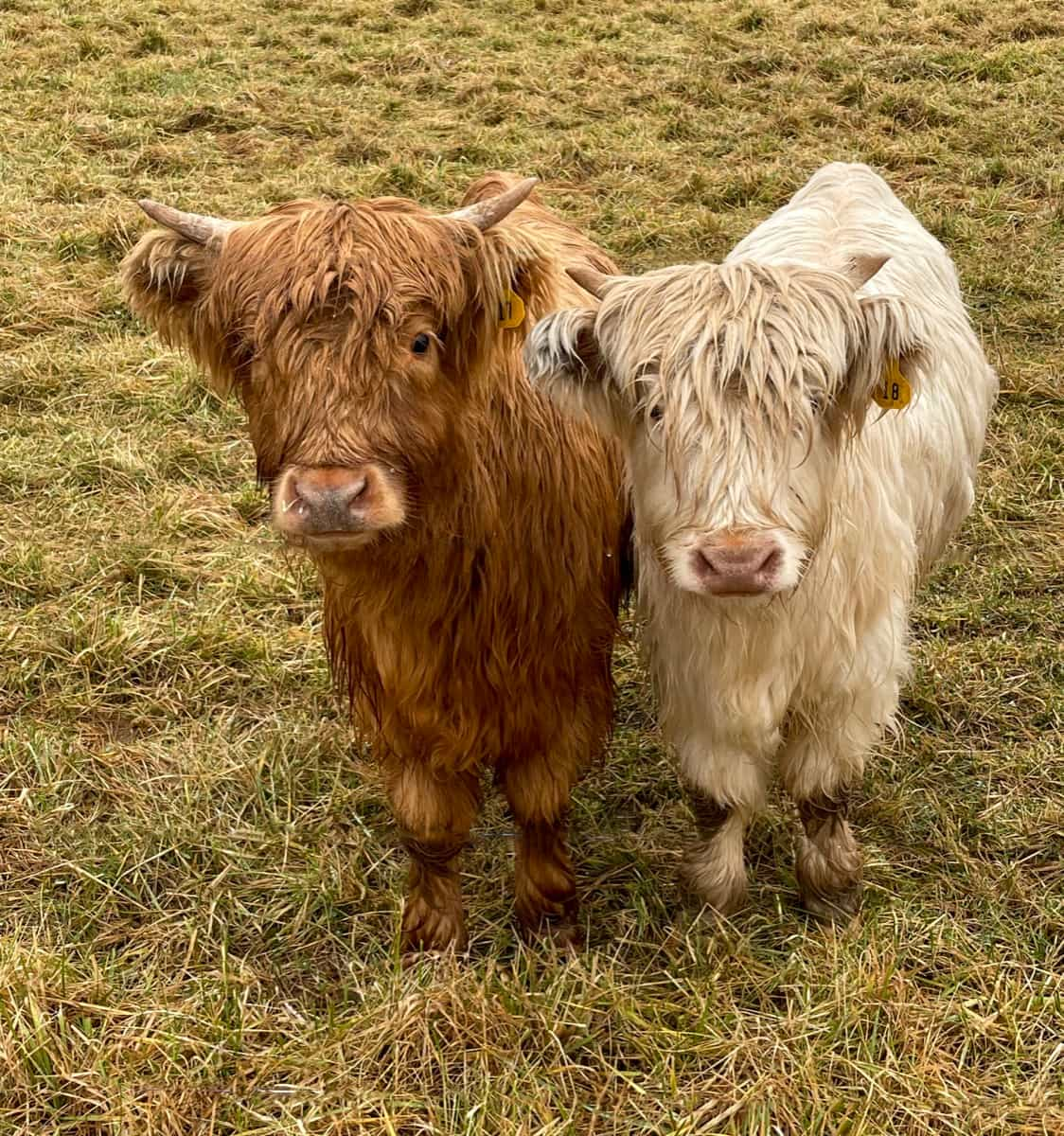
Selecting Your Cattle
When selecting your Mini Highland Cattle, you should consider several factors such as bloodlines, genetics, health, physical characteristics, personality, and price. Here are some tips on how to choose your cattle:
Understanding Bloodlines and Genetics
You should research the pedigree and history of the cattle you are interested in buying. You should look for cattle that come from reputable breeders who follow the standards and guidelines of the IMCBSR. You should also avoid cattle that have signs of dwarfism or other genetic defects.
Health and Physical Characteristics
You should inspect the cattle for any health issues or injuries before buying them. You should look for cattle that have clear eyes, clean ears, smooth coats, strong legs, straight backs, and well-formed horns. You should also check their teeth, udders, testicles, and anus for any abnormalities.
Housing and Shelter Requirements
Mini Highland Cattle need a shelter that can protect for harsh weather conditions like rain, snow, wind, or heat. The shelter should be spacious enough to accommodate their size and horns. It should also be well-ventilated, dry, clean, and secure. Here are some tips on how to design a suitable environment for your cattle:
Designing a Suitable Environment
You should provide your cattle with a pasture that has plenty of grass, water, shade, and minerals. You should also fence the pasture to prevent your cattle from wandering off or getting attacked by predators. You should use sturdy materials such as wood or metal for the fence and avoid using barbed wire or electric fences that can injure your cattle.
Shelter Maintenance
You should regularly clean and disinfect the shelter to prevent diseases and pests. You should remove any manure, urine, bedding, or debris from the shelter. You should also provide fresh water and bedding for your cattle.
Nutrition and Feeding Practices
Mini Highland Cattle need a balanced diet that consists of grass, hay, grains, minerals, and vitamins. They can graze on grass for most of the year but may need supplemental feed during winter or drought periods. Below are some tips on how to feed your cattle.
In case you missed it: Implementing Technology in Cattle Farming: Automation and Digital Solutions
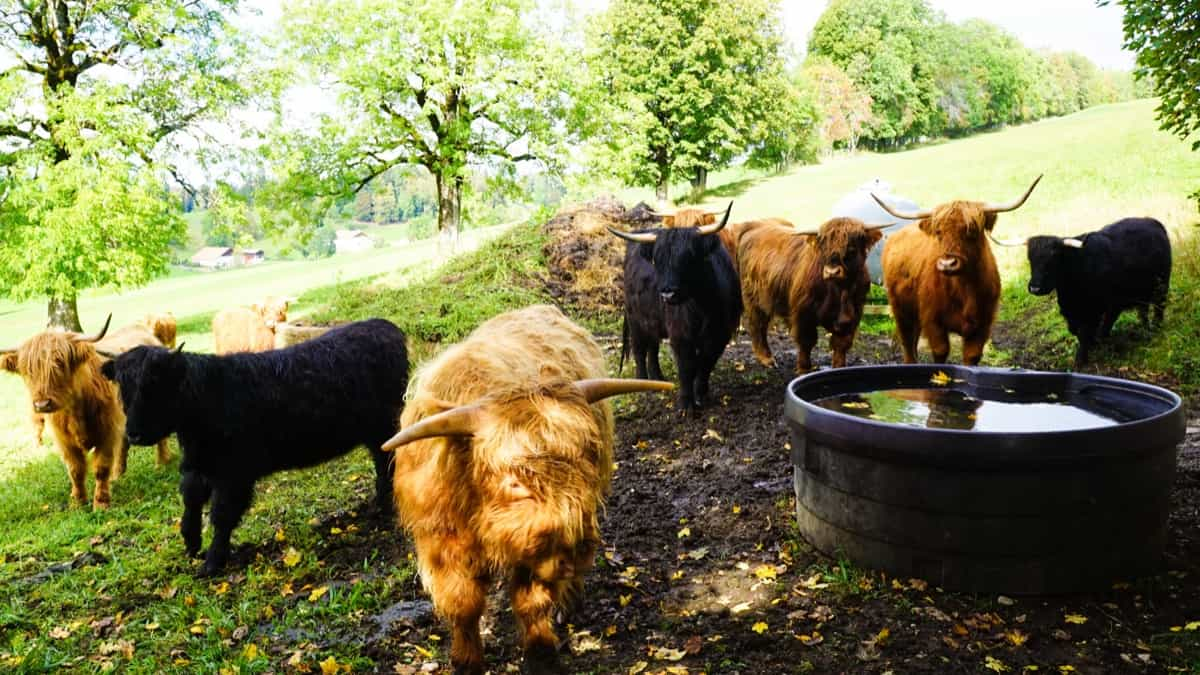
Feeding Requirements
You should feed your cattle according to their age, weight, activity level, and production goals. You should provide them with enough feed to maintain their body condition and health. You should also avoid overfeeding or underfeeding them as this can cause health problems or poor performance.
Pasture Management
You should manage your pasture to ensure that it has enough grass and water for your cattle. You should rotate your cattle to different areas of the pasture to prevent overgrazing and soil erosion. You should also mow, fertilize, and weed your pasture to improve its quality and productivity.
Health Management
Mini Highland Cattle are generally healthy and resistant to diseases and parasites. However, they still need regular health check-ups and treatments to prevent or treat any health issues. Here are some tips on how to take care of your cattle’s health:
Routine Health Check-ups
You should monitor your cattle’s health daily and look for any signs of illness or injury. You should also consult a veterinarian for routine vaccinations, deworming, hoof trimming, horn tipping, castration, pregnancy testing, and calving assistance.
Common Diseases and Prevention
Mini Highland Cattle can be affected by several common diseases, including Bovine respiratory disease (BRD), Bovine viral diarrhea (BVD), Johne’s disease, parasites, and parasites. BRD causes coughing, nasal discharge, fever, and breathing difficulties, while BRD can be prevented by vaccination, ventilation, and stress reduction.
BRD can also cause weight loss, abortion, and birth defects. Johne’s disease is a bacterial infection causing chronic diarrhea, weight loss, and wasting, which can be prevented by testing cattle, culling infected animals, and improving hygiene. Parasites, which feed on cattle’s blood or tissues, can cause anemia, weight loss, skin problems, and reduced performance.
Breeding Mini Highland Cattle
Mini Highland cattle are a selective breed of regular Highlands, bred for smaller sizes. They must be under 42 inches in height at the hip, with micro-mini Highlands under 36 inches. Breeding mini Highlands requires careful selection of breeding stock, regular measurement, and registration of offspring, and some breeders use artificial insemination or embryo transfer to introduce new genetics.
The main breeding strategy for mini Highlands is using smaller animals from the regular Highland population or crossbreeding them with other miniature cattle breeds. However, using dwarfism genes can have negative effects on health and conformation. The ideal breeding strategy is aiming for a moderate size that doesn’t compromise their hardiness, fertility, or productivity. The IMCBSR recommends a height range of 38 to 42 inches.
In case you missed it: Why You Should Consider These 20 Best Dairy Cattle Breeds for Your Farm: Top Profitable Milk Cow Breeds
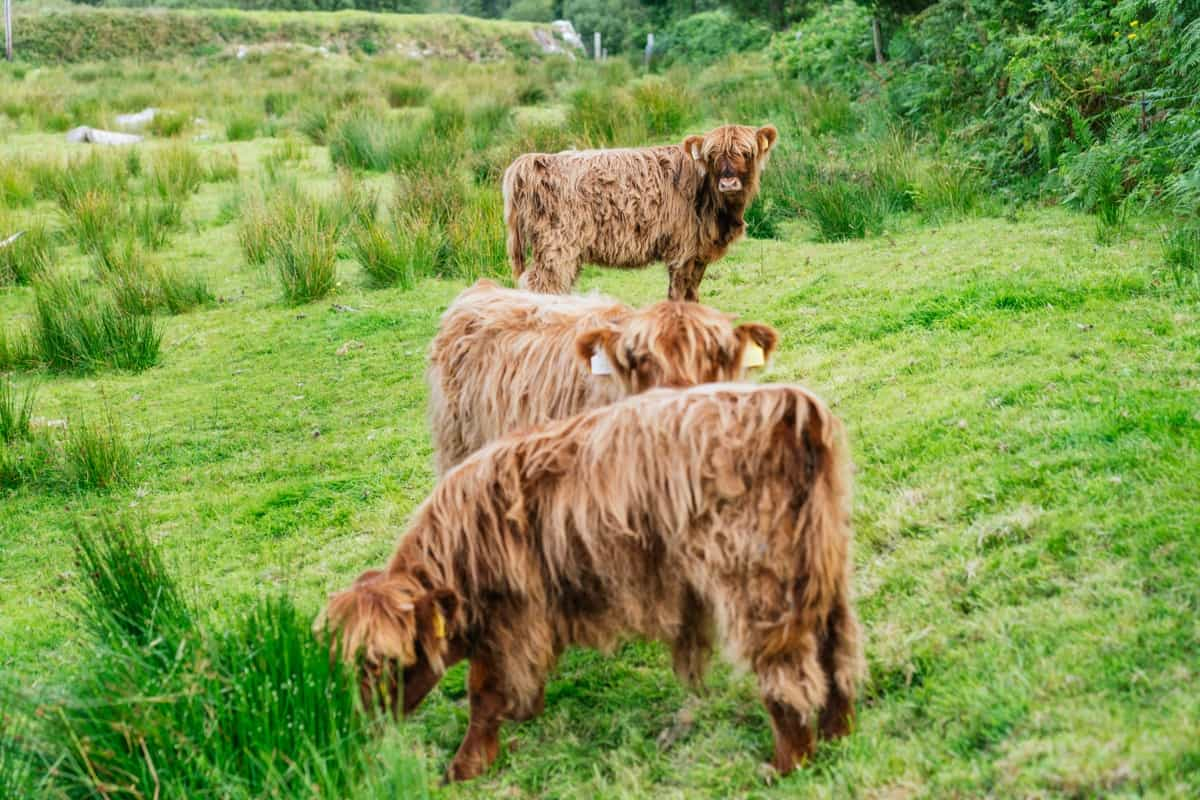
Mini Highland calves are born after a gestation period of about 283 days and weigh around 40 to 50 pounds at birth. They are easy to care for, inheriting the resilience and adaptability of their parents. They should have adequate shelter, nutrition, water, and health care, access to good quality hay or pasture, a creep feeder, colostrum from their mothers, and vaccinations and deworming, according to a veterinarian’s advice.
Handling and Training
Mini Highland cattle are known for their docile, friendly nature, making them easy to handle and train. They are curious and intelligent animals that respond well to positive reinforcement and gentle guidance. They can be halter-broken at an early age and taught to lead, tie, groom, and load on a trailer. Handling and training mini Highlands requires patience, consistency, and respect. They should be exposed to different situations and environments to socialize them and reduce stress. Safety tips for handling mini Highlands include:
- Approaching them from the front or side.
- Avoiding sudden movements or loud noises.
- Wearing protective clothing and footwear.
- Use a sturdy halter and lead rope.
- Keeping children and pets away.
- Respecting their personal space.
- Not teasing or harassing them.
Training techniques for mini Highlands include clicker training, pressure-release training, target training, and habituation. Clicker training uses a device to mark desirable behaviors and rewards with treats or praise, pressure-release training uses gentle pressure to encourage desired behaviors, target training uses an object to guide movement, and habituation involves repeatedly exposing the animal to different stimuli until they become familiar and comfortable.
Fencing and Farm Layout
Mini Highland cattle require sturdy and secure fencing to ensure their safety, comfort, and productivity. They are not escape artists like other breeds but still need space and resources to meet their needs and express their natural behaviors. Common types of fencing for mini Highlands include barbed wire, woven wire, and electric fence.
Barbed wire is a low-cost and durable option that can deter predators but may cause injuries to the cattle or handlers. Woven wire is more expensive and labor-intensive but provides better security and visibility for the cattle. An electric fence is versatile and economical but can malfunction or lose power and may not be suitable for wet or rocky areas.
The farm layout for mini Highlands should consider factors such as shelter, water, feed, and pasture. The shelter should be well-ventilated, dry, clean, and spacious enough to accommodate all animals comfortably. Water should be constant, easily accessible, and protected from freezing or contamination. Feed should be balanced and stored properly to prevent spoilage or infestation. A large, rotating pasture with natural forage, exercise, and enrichment is also essential for Mini Highlands.
Climate Considerations
Mini Highland cattle, originating from the Scottish Highlands, are well-suited for cold climates for their thick coats and efficient digestive systems. They can face challenges such as heat stress, drought, and flood, which can lead to signs of dehydration, weight loss, and reduced milk production. To prevent these issues, they should have access to shade, water, and ventilation.
Seasonal care for mini Highland cattle varies depending on the season. Spring is the time when they shed their winter coats and grow new ones, requiring grooming or clipping to remove excess hair and prevent diseases. Summer is when they face heat stress and fly problems, requiring shade, water, and ventilation. Fly control measures, such as sprays or traps, are also necessary.
In case you missed it: Why You Should Consider These 20 Best Beef Cattle Breeds for Your Farm
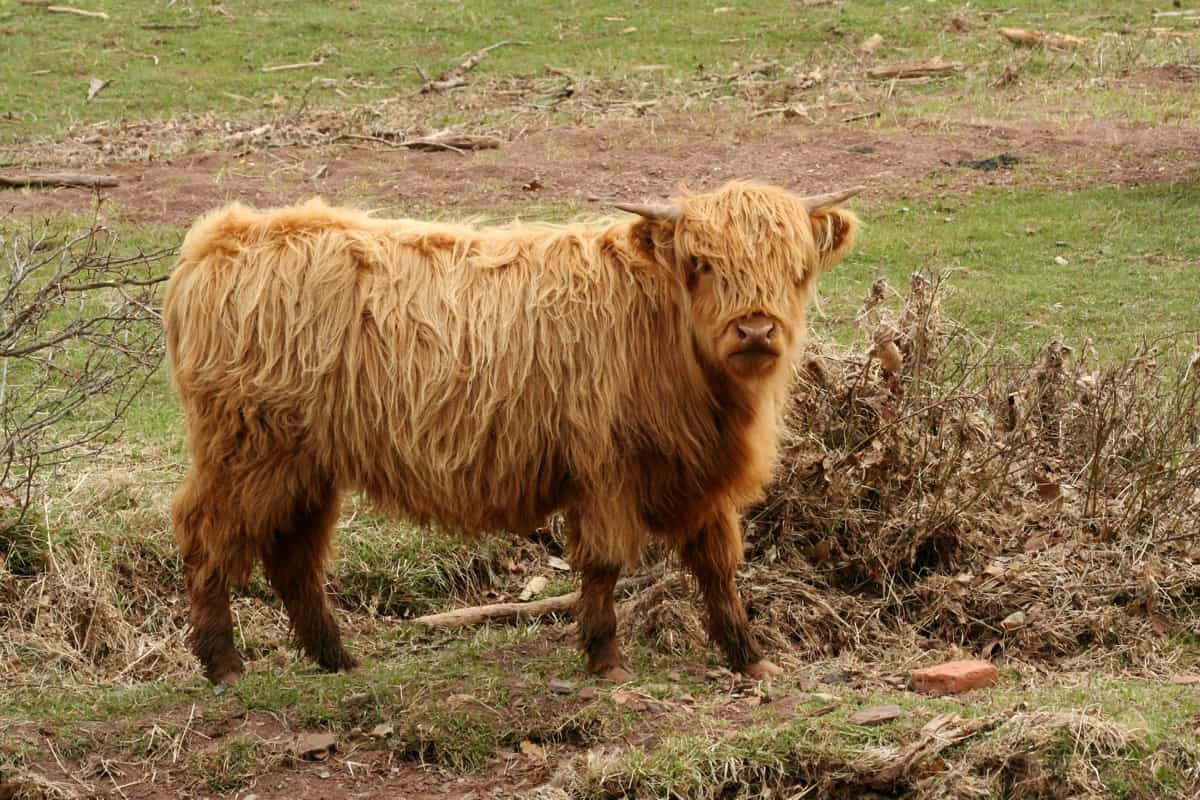
Autumn is when mini Highlands prepare for winter by growing thicker coats and storing fat. They may need more feed or supplements to boost their energy and immunity, hoof trimming, or parasite treatment. Winter is when they endure cold weather and snow, requiring shelter, bedding, heating, and more water or antifreeze devices to keep them warm and dry.
Sustainable Farming Practices
Raising mini Highland cows is a sustainable and eco-friendly farming method that reduces the need for grain or hay, thrives in cold climates due to their thick coats, and contributes to biodiversity by coexisting with other animals and plants. They are easy to care for, require little maintenance are resistant to diseases, parasites, and predators, minimizing the need for veterinary care or fencing. Mini Highland cows require basic shelter, clean water, salt blocks, and mineral supplements for their health.
Raising mini Highland cows can be a profitable venture for small-scale farmers or homesteaders who want to diversify their income sources. They can produce two gallons of milk per day, which can be used for drinking, cheese making, or selling. They can also be raised for beef, although they produce less meat per animal than larger cattle breeds. However, mini Highland beef is lean, tender, and flavorful, making it a high-quality product that can fetch a premium price.
Initial Investment and Ongoing Costs
Raising mini Highland cows requires an initial investment of $1,500 to $5,000, depending on factors like breed quality, farm location, and resources. The ongoing costs include feed, water, shelter, fencing, veterinary care, breeding fees, transportation, and marketing fees. The profitability of raising mini Highland cows depends on revenue generated from selling milk or meat products or breeding animals. Estimates suggest that a mini Highland cow can produce an annual income of $500 to $1,000 from milk sales, $800 to $1,200 from meat sales, or $2,000 to $4,000 from breeding fees.
Market trends for mini Highland cows are favorable, as consumers seek natural, organic, and humane products. They also appeal to hobby farmers, pet owners, and show exhibitors who appreciate their unique appearance and personality. The profitability of raising mini Highland cows depends on the revenue generated from selling milk or meat products or breeding animals.
Marketing Your Cattle
Marketing your mini Highland cattle is crucial for reaching your target customers and maximizing profits. There are various marketing strategies, including creating a website or social media page, joining online directories, participating in local events, advertising in niche media, and offering discounts or incentives to attract and retain loyal customers. Online and local marketplaces for selling mini Highland cattle include Miniature Cattle Directory, Miniature Cattle Classifieds, Miniature Highland Cattle Farm, Ranchr, and Outdoor Happens.
These websites allow breeders to list their cattle, post ads, sell online and ship nationwide, provide resources and tips for raising mini cattle, and offer guides on homesteading and gardening. Offering discounts, referrals, or incentives can help attract and retain loyal customers. Overall, effective marketing strategies are essential for maximizing profits and reaching your target customers.
Legal and Regulatory Compliance
Raising mini Highland cattle requires compliance with legal and regulatory requirements, which vary depending on the state and county. Common requirements include:
- Understanding local regulations.
- Registering the farm and cattle with authorities.
- Obtaining premise and animal identification numbers, following animal health and welfare standards.
- Following environmental and zoning regulations.
Additionally, obtaining a milk producer license or dairy plant license is necessary for selling milk or dairy products from mini Highland cows, a meat handler license or meat processor license for selling meat or meat products, and a sales tax permit or business license for selling cattle or their products directly to consumers. These requirements ensure compliance with sanitation, inspection, labeling, and testing standards.
Community and Support Networks
Raising mini Highland cattle can be rewarding but challenging, especially for beginners or small-scale farmers. To overcome this, it’s essential to join community and support networks like the American Highland Cattle Association (AHCA) and International Miniature Cattle Breeders Society (IMCBS). These associations offer membership benefits, newsletters, and educational programs.
In case you missed it: Lumpy Skin Disease in Cattle: Causes, Symptoms, Treatment, and Control
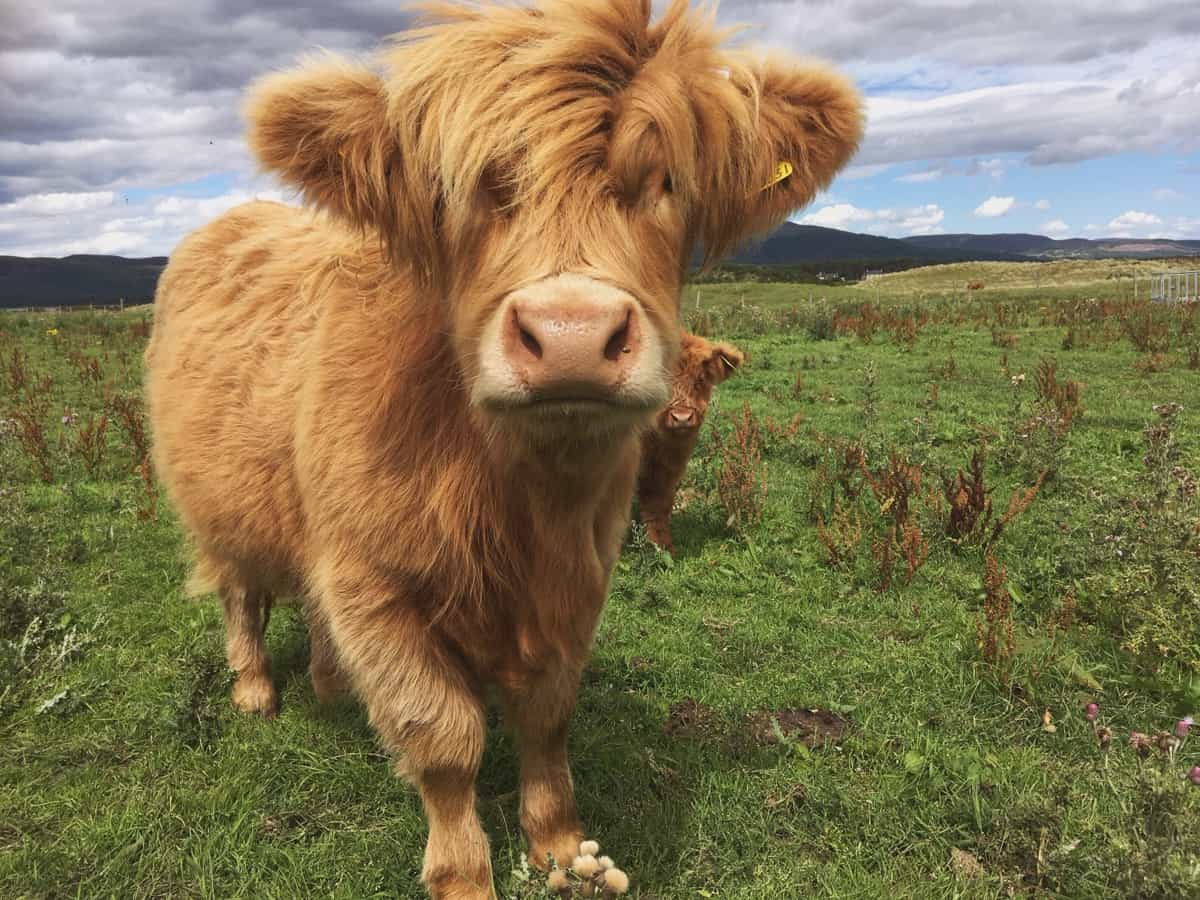
Additionally, networking with other farmers through local or regional clubs or groups and online forums or social media groups can provide opportunities to share experiences, tips, resources, and contacts. These networks can help farmers navigate the challenges of raising mini Highland cattle.
Conclusion
Mini Highland Cattle Farming offers a delightful venture blending charm and profitability. With their compact size, friendly nature, and versatile uses, these miniature cows prove to be excellent companions. While requiring care, the investment brings unique joy to both small farms and families, making it a rewarding endeavor.
- Types of Pesticides Used in Agriculture: A Beginner’s Guide
- Economical Aquaculture: A Guide to Low-Budget Fish Farming
- 15 Common Planting Errors That Can Doom Your Fruit Trees
- How to Make Houseplants Bushy: Effective Tips and Ideas
- Innovative Strategies for Boosting Coconut Pollination and Yield
- Pollination Strategies for Maximum Pumpkin Yield
- The Complete Guide to Chicken Fattening: Strategies for Maximum Growth
- Natural Solutions for Tulip Problems: 100% Effective Remedies for Leaf and Bulb-Related Issues
- Revolutionizing Citrus Preservation: Towards a Healthier, Greener Future
- Natural Solutions for Peony Leaf and Flower Problems: 100% Effective Remedies
- Maximizing Profits with Avocado Contract Farming in India: A Comprehensive Guide
- Natural Solutions for Hydrangea Problems: 100% Effective Remedies for Leaf and Flowers
- The Ultimate Guide to Choosing the Perfect Foliage Friend: Bringing Life Indoors
- From Sunlight to Sustainability: 15 Ways to Use Solar Technology in Agriculture
- The Ultimate Guide to Dong Tao Chicken: Exploring from History to Raising
- The Eco-Friendly Makeover: How to Convert Your Unused Swimming Pool into a Fish Pond
- Mastering the Art of Delaware Chicken Farming: Essentials for Healthy Backyard Flocks
- 20 Best Homemade Fertilizers for Money Plant: DIY Recipes and Application Methods
- How to Craft a Comprehensive Free-Range Chicken Farming Business Plan
- Brighten Your Flock: Raising Easter Egger Chickens for Beauty and Bounty
- How to Optimize Your Poultry Egg Farm Business Plan with These Strategies
- Subsidy for Spirulina Cultivation: How Indian Government Schemes Encouraging Spirulina Farmers
- Ultimate Guide to Raising Dominique Chickens: Breeding, Feeding, Egg-Production, and Care
- Mastering the Art of Raising Jersey Giant Chickens: Care, Feeding, and More
- Ultimate Guide to Raising Legbar Chickens: Breeding, Farming Practices, Diet, Egg-Production
- How to Raise Welsummer Chickens: A Comprehensive Guide for Beginners
- How to Protect Indoor Plants in Winter: A Comprehensive Guide
- Ultimate Guide to Grow Bag Gardening: Tips, Tricks, and Planting Ideas for Urban Gardeners
- Guide to Lotus Cultivation: How to Propagate, Plant, Grow, Care, Cost, and Profit
- Agriculture Drone Subsidy Scheme: Government Kisan Subsidy, License, and How to Apply Online
- Ultimate Guide to Raising Araucana Chickens: Breed Profile, Farming Economics, Diet, and Care
- Bringing Hydroponics to Classroom: Importance, Benefits of Learning for School Students
- Ultimate Guide to Raising Polish Chickens: Breed Profile, Farming Economics, Diet, and Care
- Ultimate Guide to Raising Australorp Chickens: Profile, Farming Economics, Egg Production, Diet, and Care
- Silkie Chicken Farming: Raising Practices, Varieties, Egg Production, Diet, and Care
- Sussex Chicken Farming: Raising Practices, Varieties, Egg Production, Diet and Care